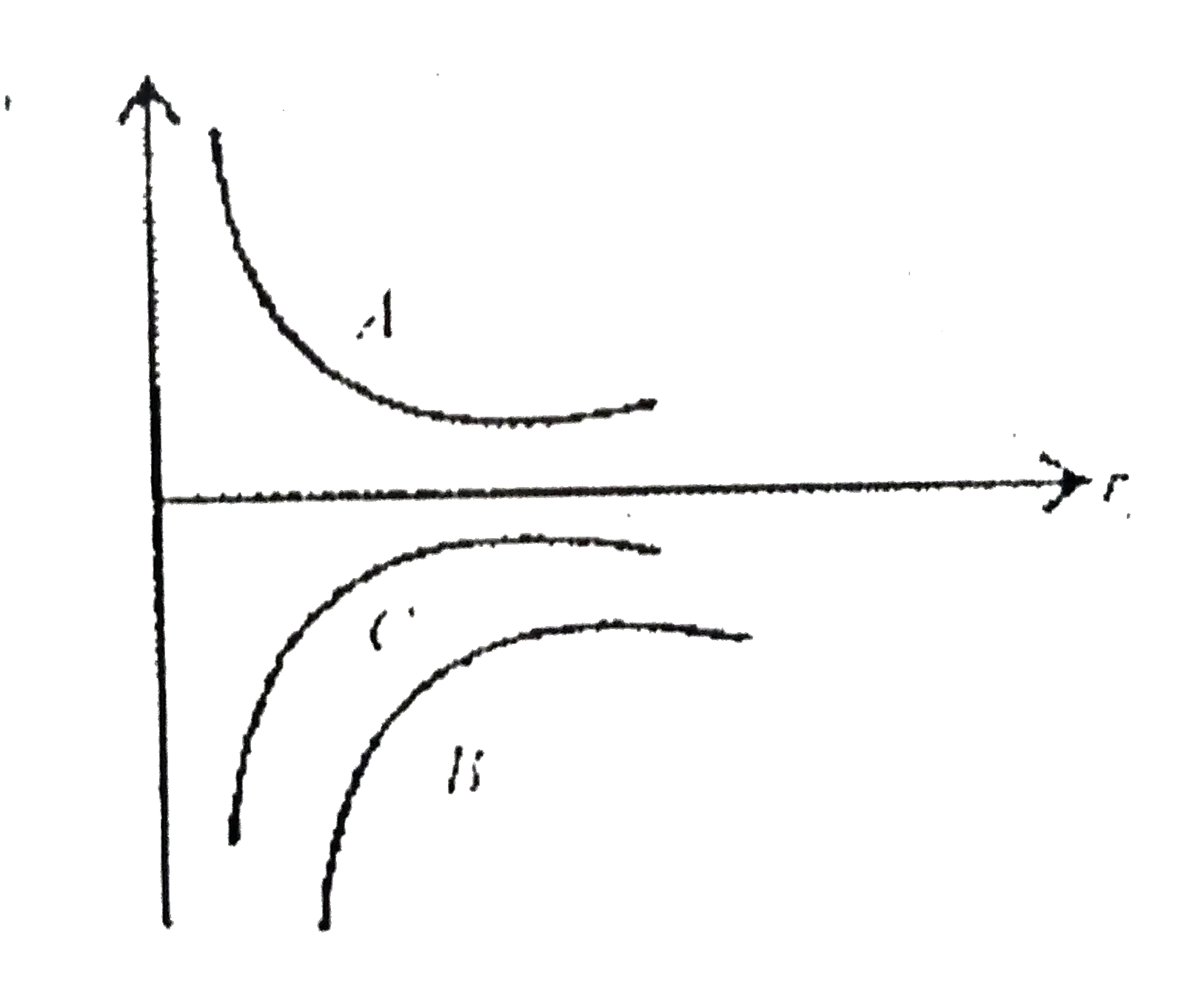Mark the correct statements.
Gravitational potential at the centre of curvature of a thin hemispherical shell of radius R and mass M is equal to GM/R.
Gravitational field strength at a point lying on the axis of a thin, uniform circular ring of radius R and mass M is equal to GMx/[(R2+x2)32] where x is distance of that point from the centre of the ring.
Newton's law of gravitation for gravitational force between two bodies is applicable only when bodies have spherical symmetric distribution of mass.
None of these
The correct Answer is:B, C
Since every element of the hemispherical shell is at a potential R from thecentre of curvature, therefore gravitational potential at its centre =−GM/R. It is not equal to GM/R. Hence, option a is incorrect.
Gravitational field strength at a point, lying on the axis of a thin uniform circular ring of radius R, can be calculated by considering two equal elemental lengths of the ring such that these considering two equal elemental lengths of the ring such that these are length lying on the ends of a diameter and thus the expression given in option b is obtained. Hence, option b is correct.
Newton's law of gravitation is applicable to only those bodies which have spherically symmertric distribution of mass. For example, if we consider two solid hemispheres of equal radii, one made of wood and the other made of iron. These two hemispheres are joined together to form a shape of complete sphere we cannot apply Newton's gravitational law of this sphere, so option c is correct.
Topper's Solved these Questions
- GRAVITATIONBOOK - CENGAGE PHYSICS ENGLISHCHAPTER - GRAVITATIONEXERCISE - Multiple Correct
24 Videos
- GRAVITATIONBOOK - CENGAGE PHYSICS ENGLISHCHAPTER - GRAVITATIONEXERCISE - Assertion- Reasoning
13 Videos
- GRAVITATIONBOOK - CENGAGE PHYSICS ENGLISHCHAPTER - GRAVITATIONEXERCISE - Subjective
15 Videos
- FLUID MECHANICSBOOK - CENGAGE PHYSICS ENGLISHCHAPTER - FLUID MECHANICSEXERCISE - INTEGER_TYPE
1 Videos
- KINEMATICS-1BOOK - CENGAGE PHYSICS ENGLISHCHAPTER - KINEMATICS-1EXERCISE - Integer
9 Videos
Similar Questions
Knowledge Check
Mark the correct statement for viscosity .
A(a) Greater the viscosity , more slowly the liquid flows .B(b) Viscosity increases with increase in temperature .C(c) Hydrogen bonding and van der Waals forces decrease the viscosity .D(d) Viscosity is the measure of ease with which a liquid flows .
Human insulin has 51 amino acids in two chains. Mark the correct statement.
View SolutionTwo bulbs B1 and B2 are used in a household circuit. B1 glows brighter and B2 glows dim. Mark the correct statement.
View SolutionA few statements are made about the characteristics of prokaryotic and eukaryotic cells.
Mark the correct statement .
View SolutionMark the correct statement for enzymes.
View SolutionMark the correct statement for Selaginella .
View SolutionMark the correct statement for Albugo.
View SolutionMark the correct statement for monosaccharides.
View Solution

